Soldiers of the RegimentColour
Sergeant Richard Watson, 5th Battalion King's Own
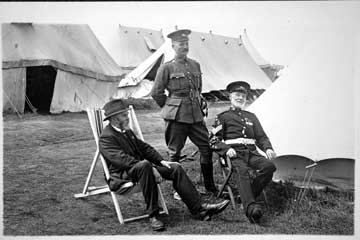
5th Battalion at Kirkham Camp, Lancashire, 1912. Standing is Major
Bates and seated right is Colour Sergeant Richard Watson.
Accession Number: KO0104/21
Colour Sergeant Richard Watson, of the 5th Battalion, attended
over fifty camps and one report indicates he spent his 53rd camp by
invitation of the officers so that his fine record might not be broken.
He had 13 service stars, each denoting four years and was ‘well over
seventy’.
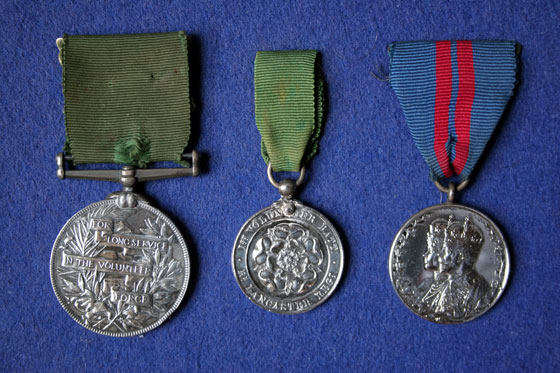
Volunteer Long Service Medal, Regimental Medal for 21 years service, and
1911 Coronation Medal to Colour Sergeant Richard Watson
Accession Number: KO0765/09, 10 & 11.
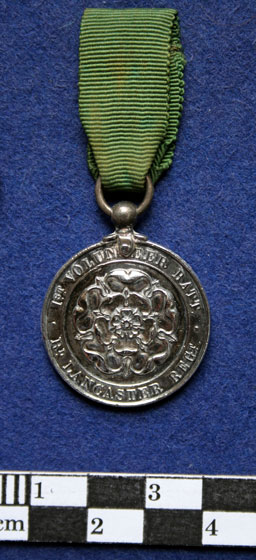
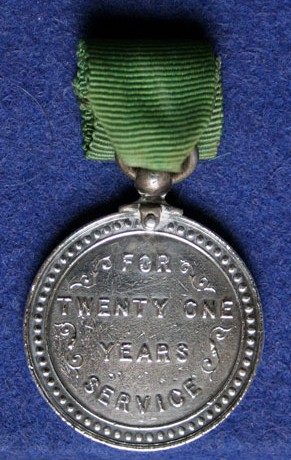
Volunteer Regimental Medal to Colour Sergeant Richard Watson.
Accession Number: KO0765/10
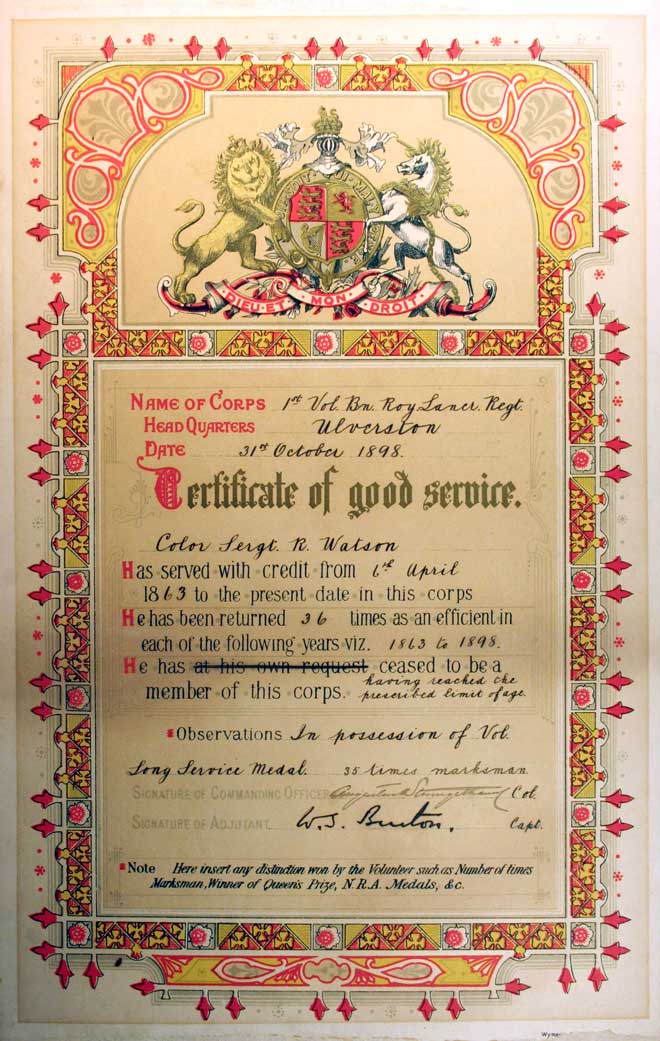
Certificate of Good Service to Colour Sergeant Watson of the 1st
Volunteer Battalion, King's Own Royal Lancaster Regiment dated 31st
October 1898. He had served from 6th April 1863 with the
Lancashire Rifle Volunteers, nearly twenty years prior to the creation
of the 1st Volunteer Battalion.
Accession Number: KO0489/01
From the Lancaster Guardian, 10 May 1919.
Death of an Old Volunteer
One of the best known figures in Lancaster passed away suddenly on
Monday, by the death of Mr Richard Watson, brush manufacturer, 72 Dallas
Road. It is interesting to note in view of recent educational
developments that Mr. Watson was apprenticed to Mr Wane, brush
manufacturer in King Street (the shop now occupied by Mr. Brockbank) at
the age of 9. He had worked no less than 71 years, first under Mr Wane,
then under Messrs. Marsden, father and son, successors in New Street,
and since June 1896 he had been proprietor of the business, which, 17
years ago was transferred to Church Street, the site being required by
the Co-operative Society.
Mr Watson married on 25 Dec 1862 Miss Hannah Patterson, second daughter
of Mr William Patterson, cabinet maker, shed died in 1899. Mr Watson was
summoned from the Isle of Man where he was in training with the
Volunteers, and found his wife dead, and the same day his shop caught
fire, so misfortune did not come singly.
Of their family one son and three daughters (Mrs Postlethwaite, Mrs C
Riley and Mrs F Atkinson who is in America) survive.
The death of his daughter, Jessie, last July was a great blow to him as
she assisted in the business.
He was working till Saturday, and called at the shop on Sunday for his
letters. Heart trouble caused the end.
Mr Watson will be remembered chiefly for his remarkable career as a
Volunteer. He joined the Lancaster Corps in 1863 when Mr Henry Gregson
was Captain. The Drill Hall was then in Brewery Lane in premises now
belonging to Messrs Yates and Jackson. His enthusiasm for Volunteering
was unique, being made Sergeant four years later. He rose to the rank of
Colour Sergeant and and president of the Sergeants Mess. The Lancaster
Volunteers drilled subsequently in the Exchange Hall, then the Assembly
room, and then the Drill Hall in Phoenix Street was built about 25 years
ago (1894).
Colour Sergeant Watson was a keen marksman, and won many prizes,
including the Borough Challenge Cup. He was most exemplary in his
attendance at drill, and was awarded the Battalion Silver Medal for 21
years continuous service in Sep 1886, while in Mar 1895 he was decorated
with the Queen’s Medal for over 30 years service as a Volunteer, along
with the late Drum Major Lamb. In Jul 1919, Colour Sergeant Watson
received from Dr. Lamport an oak barometer was a recognition of services
rendered to the St. John Ambulance Brigade, by granting the free use of
the Assembly rooms, of which he was a tenant for many years.
Mr Watson was proud of his record for attending Volunteer Camps, which
was unsurpassed. In 1895 he had been to 26 camps, and had doubled this
in 1914, when he went to Kirkby Lonsdale, but the outbreak of the war
caused the camp to be struck the second day. He went to visit the 1/5
King’s Own Territorials before they left for France, and often expressed
regret that he could not go with them.
It was only fitting that a man with such a fine service record should be
interred with Military Honours. The funeral took place on Thursday at
Lancaster Cemetery.
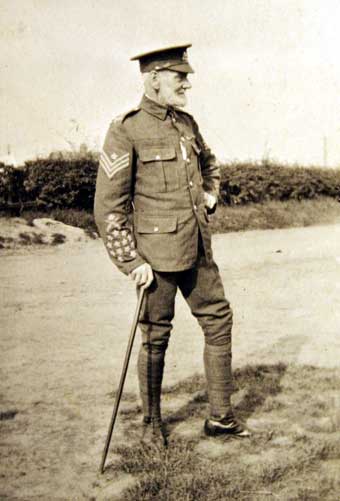
Colour Sergeant Richard Watson, circa 1910.
Accession Number: KO1330/01
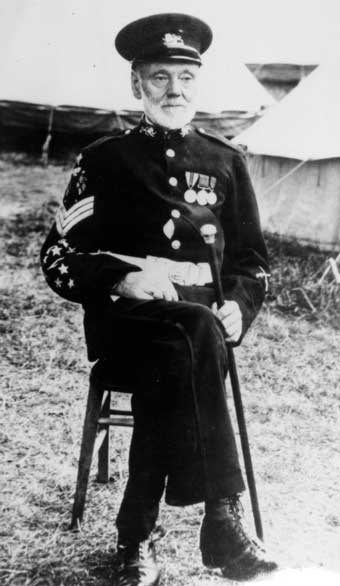
Colour Sergeant Richard Watson at Kirkham Camp, 1912.
Accession Number: KO1404/01

Colour Sergeant Richard Watson.
Accession Number: KO1404/02
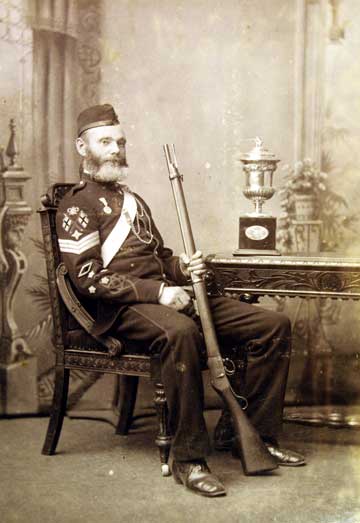
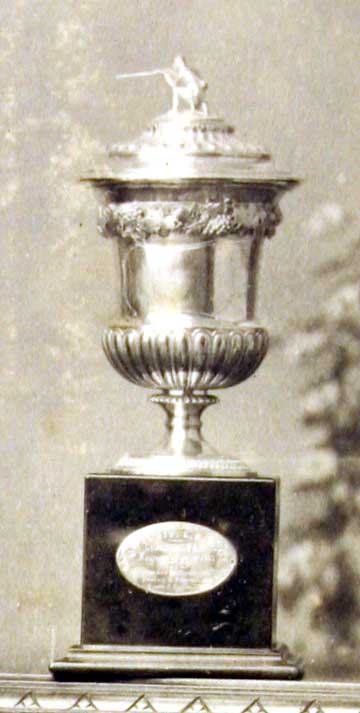
Colour Sergeant Richard Watson, Volunteer Battalion, circa late 1890s.
Accession Number: KO1404/03
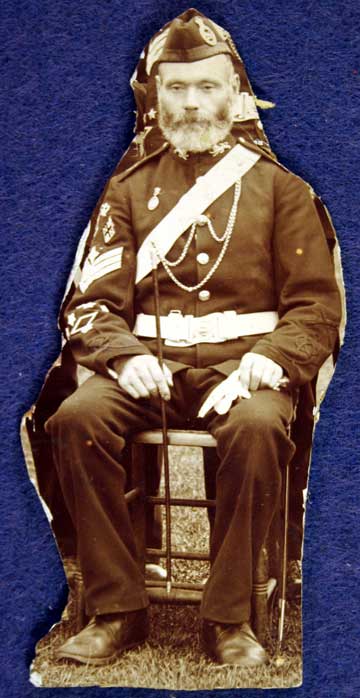
Colour Sergeant Richard Watson, 1st Volunteer Battalion, circa late 1890s.
Accession Number: KO1404/04

Sergeants of the 1st Volunteer Battalion, King's Own Royal Lancaster
Regiment, circa 1896. Colour Sergeant Richard Watson is seated
second from the right.
Accession Number: KO1404/05
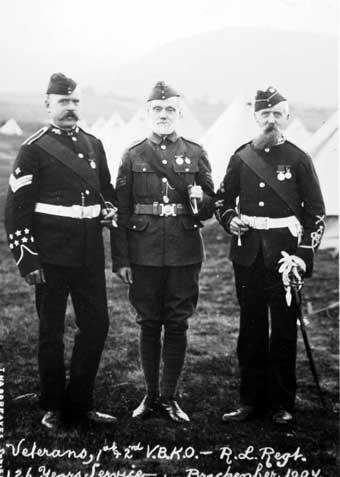
Veterans of the 1st and 2nd Volunteer Battalion, King’s Own Royal
Lancaster Regiment, with 126 years of service, Brackenber 1907.
On the left is Colour Sergeant Joseph Woodcock,
in the centre is Colour Sergeant Richard Watson and the soldier on the
right is not known.
Photograph ‘J. Hargreaves Series’
Accession Number: KO3100/62
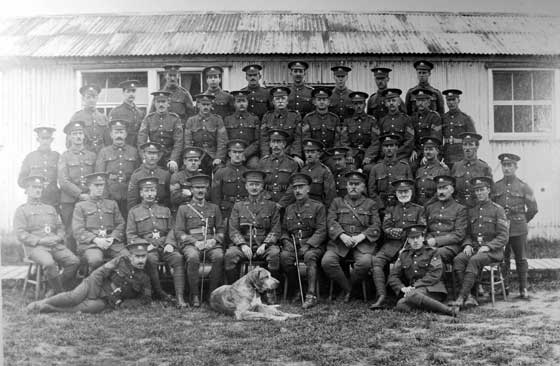
3rd/5th Battalion, King's Own Royal Lancaster Regiment, August 1916.
Photograph noted as being presented by Colour Sergeant
Richard Watson.
Accession Number: KO0408/13
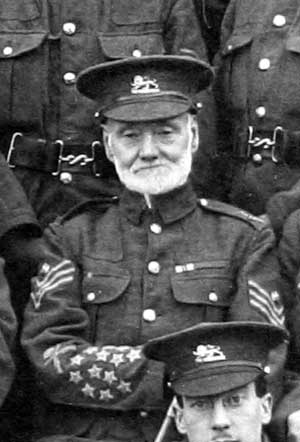
Colour Sergeant Richard Watson.
Accession Number: KO0408/13a
Only a proportion of our collections
are on display at anyone time. Certain items are on loan for display
in other institutions. An appointment is required to consult any of
our collections which are held in store.
















